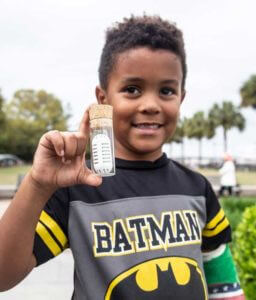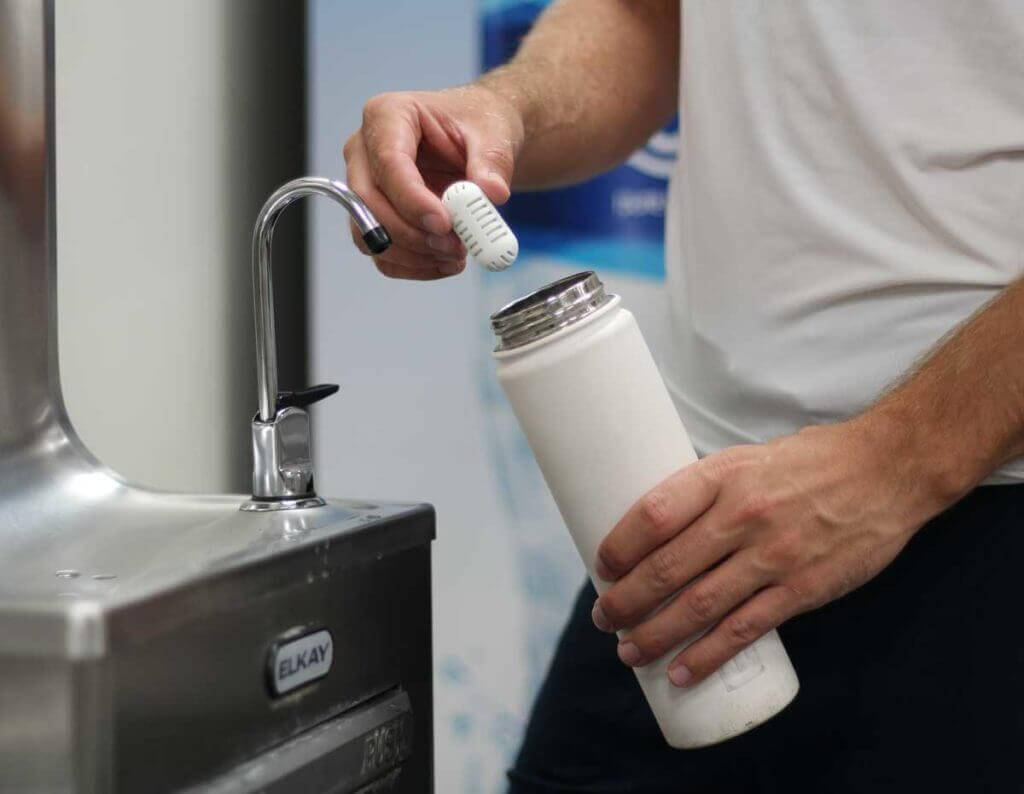Everybody needs water – It’s likely that you or your child used a public drinking fountain this summer. Whether to fill your water bottle at a refill station or just stay hydrated at the park or gym – a drinking fountain can be convenient and money-saving. But now, as kids and teachers head back to school their primary source of drinking water is probably a drinking fountain. You may be wondering “Are drinking fountains safe?”
Many Americans are wondering the same thing and the doubt is enough to cause a decrease in the number of public drinking fountains available. We set out to best understand the current state of drinking fountains and answer the question “are drinking fountains safe?”.
Drinking Fountains In America
Public drinking fountains have been around since the mid-1800s. With the new invention, drinking water became easily available to all walks of life for free! Whether you call it a drinking fountain, bubbler, or water fountain – they have been a helpful public source for drinking water for a long time. However, due to the attitude and mistrust of public drinking fountains, they are declining every year. The Washington Post even goes as far as to say public fountains are in crisis as they are fading in stadiums, parks, and even schools. In 2015, the international plumbing code changed the number of fountains required in a building, cutting the required number in half.
This is not good news for the health or the hydration of the general public. If water is not easily available kids and adults are often turning to bottled sugary drinks, like soda and juices that are supplied in school and office vending machines. Even if you bring your own water wherever you go, you could end up spending more $$ on refills to just keep hydrated. Not to mention, the lack of public drinking fountains has detrimental environmental effects due to the number of plastic water bottles being consumed. At GOpure, we understand the importance of a happy, healthy, and hydrated society. But our distrust of public drinking fountains is making a sizable negative impact on that mission.
What’s In The Water?
The water in drinking fountains goes through the same cleaning process as the tap water that comes out of sinks at your school and home. However, the pipes that the water runs through will also affect the quality of the water. How old are they? Are they well maintained? Debris from pipes can contaminate the water and end up in your water bottle.
We recently published an article “The Five Most Common Contaminants Found in Drinking Water,” which hi-lights some important things to know about the tap water you drink. For example, did you know that EPA estimated that over 60,000 chemicals are being used within the USA to treat water, but the Safe Water Act oversees only 91 contaminants? Yikes! The truth is our water sources are being contaminated by a whole bunch of dangerous chemicals, and it is up to you to decide how to get clean, safe drinking water. The five most common contaminants described in the article include nitrates, arsenic, microorganisms like bacteria and viruses, aluminum, and fluoride. Yep, all of those are in your tap water!
Public schools in Detroit, Michigan and Chicago, Illinois have even gone as far as to turn off drinking fountains because the water is too contaminated with lead, copper, and other common contaminants. In children, exposure to even low levels of lead has been linked to lower IQ, hyperactivity, learning disabilities, stunted growth, impaired hearing, and anemia. Copper is a mineral that is useful for bodily functions, but can be dangerous when ingested in large amounts. Symptoms of copper overdose include nausea, vomiting, abdominal pain, diarrhea, and anemia.
However, all is not doom and gloom. Some cities, such as San Diego, Minneapolis, and New York are slowly beginning to apply enhanced maintenance and water treatment processes and invest in the well-being of their public systems. Los Angeles has recently passed an extensive plan to upgrade their public water sources, and in Washington, local non-profit groups are pushing for businesses to provide free water bottle filling stations.
But like many things in life, change comes slowly. And when we are looking at the health of not only ourselves but our children, precautions must be taken to combat the harmful effects of contaminated water.
What’s On The Surface?
Besides the tap water being contaminated with chemicals and bacteria – the fountain itself is likely covered in germs! Drinking fountains are breeding grounds for germs and bacteria. The more people who come in contact with the public fountain – the more germs there are. If we are talking about school or stadium fountains – that’s hundreds or more adults and children a day! This includes water refill stations- if your bottle comes in contact with the surface it can be contaminated as well.
Many studies in daycare centers have found that water fountains are common carriers of rotavirus, which is known to cause diarrhea. Researchers have also found that handles on drinking fountains were the most contaminated surfaces in public schools. These bubblers are hosts for norovirus and influenza A. The norovirus, commonly known as the stomach flu, causes vomiting, diarrhea, and stomach cramps. Influenza A can cause high fever, sore throat, chills, and a whole host of other symptoms that can even lead to hospitalization.
This report from the CDC states, “Form 2011–2012, 32 drinking water-associated outbreaks were reported, accounting for at least 431 cases of illness, 102 hospitalizations, and 14 deaths.”
Legionella was the main culprit of these outbreaks and illnesses and usually comes from the building’s plumbing system. Legionella is a kind of bacteria that causes legionnaire’s disease which is a kind of pneumonia. Even more, research has shown that the streptococci virus found on the drinking fountain was likely the reason for the transmission of the virus.
While all of that is quite disturbing its really not overly surprising. If you are parent of a child in the public school system you know the amount of germs your child is exposed to. Probably because you have experienced them coming in contact with at least one of the illnesses mentioned above.
What To Do About It?
I’m sure you are already thinking, “I send my kids to school with water from home,” but those bottles are not bottomless and will need to be refilled. Not to mention, kids are often waiting in a line with their entire class at the fountain after gym class or outdoor activities.

Water filtration remains not only one of the most comprehensive solutions for water contamination, but also the most eco-friendly. Here at GOpure we have dedicated ourselves to creating flexible, low-cost solutions to ensure that every American can have immediate and affordable access to clean water. Our portable purifiers work fast to remove lead, chromium, chlorine, fluoride and a whole host of other impurities so that any drinking fountain can immediately be transformed into a clean, purified water source.
Without dependable, consistent access to clean public water, we must invest in other solutions to ensure that hydration is safe and remains a priority in this country. The negative effects of dehydration are far too serious to simply ignore. Clean water is not a luxury, it’s a right and something that we strive to help ensure is available everywhere and to keep the environment and personal health first and foremost in our priorities. Don’t forget to stop by our shop and order your GoPure Pod water filter today!





